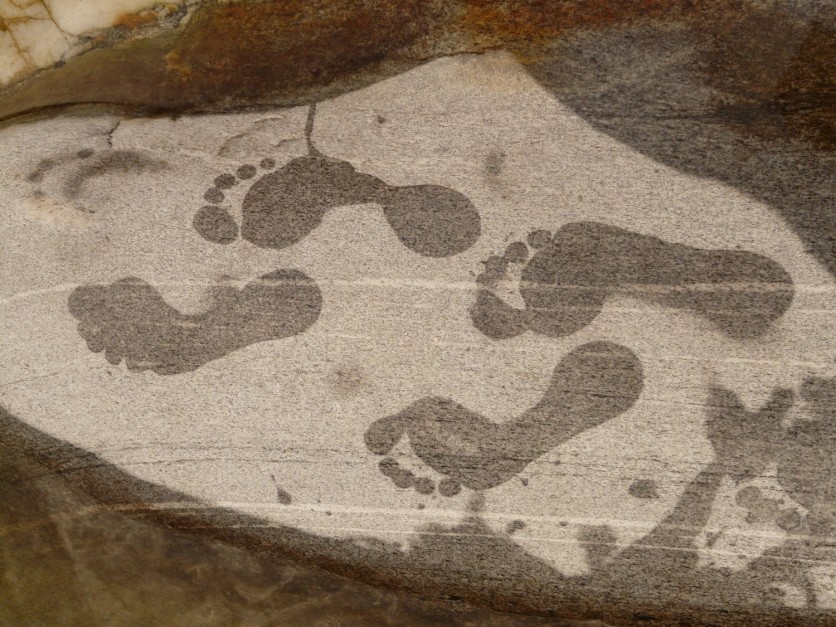In a mesmerizing expedition back in time, an international team of scientists, led by researchers from the University of Tübingen and the Senckenberg Center for Human Evolution and Paleoenvironment, has unveiled an astonishing archaeological revelation.

Earliest Human Footprints
Nestled within the Schöningen Paleolithic site complex in Lower Saxony, Germany, lie the earliest human footprints ever recorded in the region, dating back an awe-inspiring 300,000 years.
These ancient imprints, believed to be traces of Homo heidelbergensis, are accompanied by a symphony of animal tracks, collectively painting a vivid portrait of the ecosystem that once thrived.
Imagine yourself in a picturesque birch and pine forest, where shafts of sunlight pierce through the verdant canopy. A pristine lake, stretching for kilometers, shimmers like a sapphire jewel, reflecting the surrounding majesty.
In this natural haven, herds of elephants, rhinoceroses, and ungulates converge, seeking solace in the waters. Amidst this scenery, a small family of Homo heidelbergensis, a long-extinct human species, find its place.
"This is what it might have looked like at Schöningen in Lower Saxony 300,000 years ago," said the lead author Dr. Flavio Altamura, a fellow at the Senckenberg Center for Human Evolution and Palaeoenvironment at the University of Tübingen (SHEP).
"For the first time, we conducted a detailed investigation of the fossil footprints from two sites in Schöningen."
Snapshot of Ancient Life
Within this treasure trove of discovery, Dr. Altamura and his team uncovered three tracks that bore a striking resemblance to hominin footprints.
These remarkable impressions, aged approximately 300,000 years, stand as the oldest testament to human presence in Germany, shedding light on our distant ancestors, Homo heidelbergensis.
The researchers ascribe two of the human tracks to young individuals who traversed the lake's shores, exploiting the abundant resources found in the vicinity.
The diverse tracks found at Schöningen present a snapshot of daily life for a family and offer valuable insights into the behavior and social structure of hominin groups. These tracks also reveal their interactions and coexistence with elephant herds and other smaller mammals, as noted in the study.
The team said that this site was more likely a family excursion rather than a gathering of adult hunters.
In addition to the human footprints, the research team examined a series of elephant tracks from the extinct species Palaeoloxodon antiquus. These elephants possessed straight tusks and were the largest land animals of their time, with adult bulls weighing up to 13 tons.
At Schöningen, the remarkable elephant tracks uncovered measure an impressive length of 55 centimeters. Dr. Jordi Serangeli, the excavation supervisor, shares that the team made an intriguing discovery within these prints - fragments of wood that had been pressed into the soft soil by the elephants.
Additionally, a single track from either Stephanorhinus kirchbergensis or Stephanorhinus hemitoechus, both Pleistocene species of rhinoceros, has been found in Europe for the first time.
These footprints from both humans and animals unveil a narrative of coexistence and interdependence.
They offer a remarkable glimpse into an ancient ecosystem where the rhythm of life played out in sync, where footsteps intertwined to create a vibrant tapestry of existence.
The findings of the team were published in Quaternary Science Reviews.

ⓒ 2025 TECHTIMES.com All rights reserved. Do not reproduce without permission.




